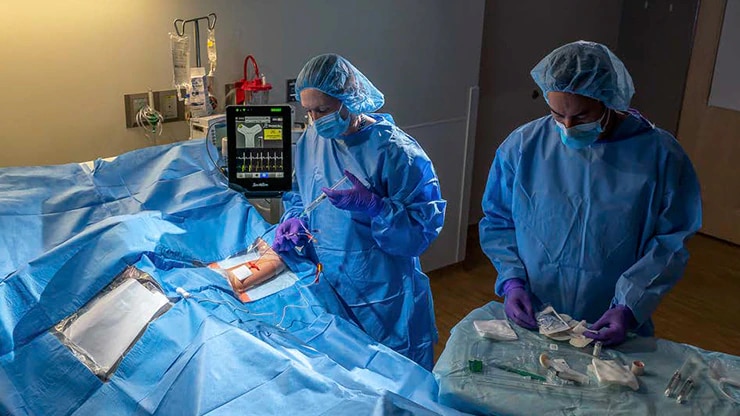true
Patient Safety Solutions
Comprehensive solutions to support your efforts to address infection risk factors

Related Solutions
* Results from the U.S. in 2015
† Results from one state in the U.S. in 2010
‡ Results from the U.S. in 2011
- U.S. Department of Health & Human Services. Centers for Disease Control and Prevention, HAI Data. Centers for Disease Control and Prevention. Available at. Last reviewed: October 5, 2018.
- Centers for Disease Control and Prevention. FAQs about HAI Progress Report. Centers for Disease Control and Prevention. Available at. Last updated October 25, 2018. Accessed December 10, 2018.
- Pennsylvania Health Care Cost Containment Council (PHC4). The Impact of Healthcare-associated Infections in Pennsylvania 2010. Pennsylvania Health Care Cost Containment Council (PHC4). Accessed: Feb 2012
- Kaiser Health News (KHN). Preeminent Hospitals Penalized Over Rates Of Patients’ Injuries. Kaiser Health News (KHN). Published January 31, 2020.Available at. Published January 3, 2020
- National Library of Medicine. Estimating the Proportion of Healthcare-Associated Infections That Are Reasonably Preventable and the Related Mortality and Costs. National Library of Medicine. Available at. Accessed February, 2011.
- Centers for Disease Control and Prevention. Catheter-associated Urinary Tract Infections (CAUTI). Centers for Disease Control and Prevention. Available at. Accessed March 30, 2020.
- Centers for Disease Control and Prevention. Antibiotic Resistance & Patient Safety Portal: Healthcare-Associated Infections. Centers for Disease Control and Prevention. Available at. Accessed March 30, 2020.
- Centers for Disease Control and Prevention. Central Line-associated Bloodstream Infections: Resources for Patients and Healthcare Providers. Centers for Disease Control and Prevention. Available at. Page last reviewed: February 7, 2011
- Centers for Disease Control and Prevention. Bloodstream Infection Event. Centers for Disease Control and Prevention. Available at. Page last reviewed: January 2020
- Centers for Disease Control and Prevention. Vital signs: central line-associated blood stream infections—United States, 2001, 2008, and 2009. MMWR Morb Mortal Wkly Rep. 2011;60(8):243-248
- Society for Healthcare Epidemiology of America (SHEA) Healthcare-Associated Infections: A Compendium of Prevention Recommendations. Available at. Copyright 2014. (PDF file)
- National Library of Medicine. Risk Factors for Surgical Site Infection. National Library of Medicine. Available at. Accessed 2006. PMID: 16834549 DOI: 10.1089/sur.2006.7.s1-7
- Centers for Disease Control and Prevention. What is C. diff. Centers for Disease Control and Prevention. Available at. Accessed April 6, 2020.
- Centers for Disease Control and Prevention. Antibiotic Resistant Threats in the United States. Centers for Disease Control and Prevention. Available at. Published December 2019. Accessed April 15, 2020.
- Centers for Disease Control and Prevention. Information for Clinicians about C. diff. Centers for Disease Control and Prevention. Available at Accessed April 6, 2020.
- Centers for Disease Control and Prevention. Clinicians: Information about CRE. Centers for Disease Control and Prevention. Available at. Page last reviewed: November 13,2019
- Centers for Disease Control and Prevention. Carbapenem-resistant Enterobacteriaceae (CRE). Centers for Disease Control and Prevention. Available at. Accessed April 6, 2020.
- Centers for Disease Control and Prevention. General Information. Centers for Disease Control and Prevention. Available at. Page last reviewed: June 26, 2019
- Centers for Disease Control and Prevention. Methicillin-resistant Staphylococcus aureus (MRSA) Healthcare Settings. Centers for Disease Control and Prevention. Available at. Accessed April 15, 2020.
BD-19046
true











